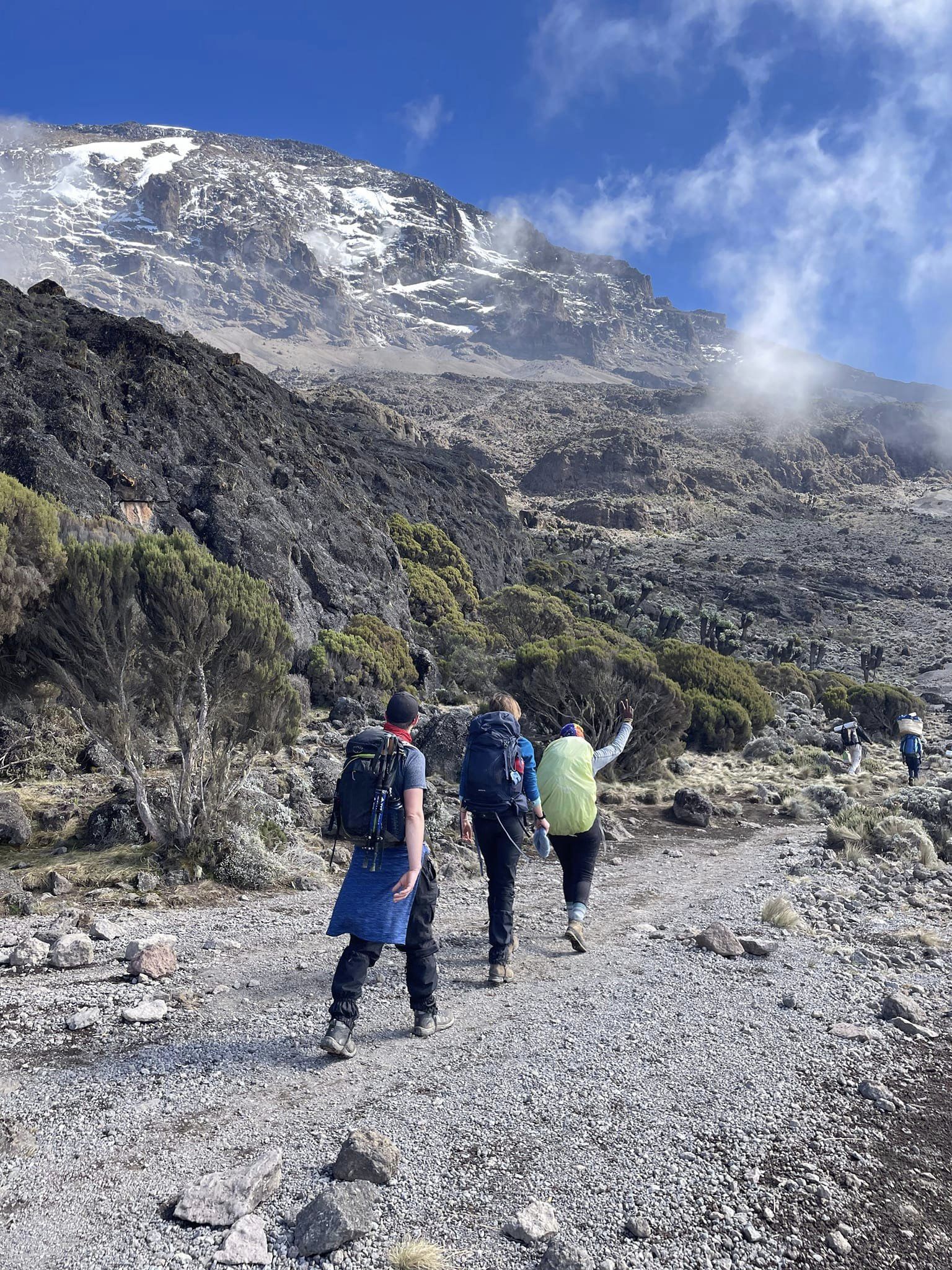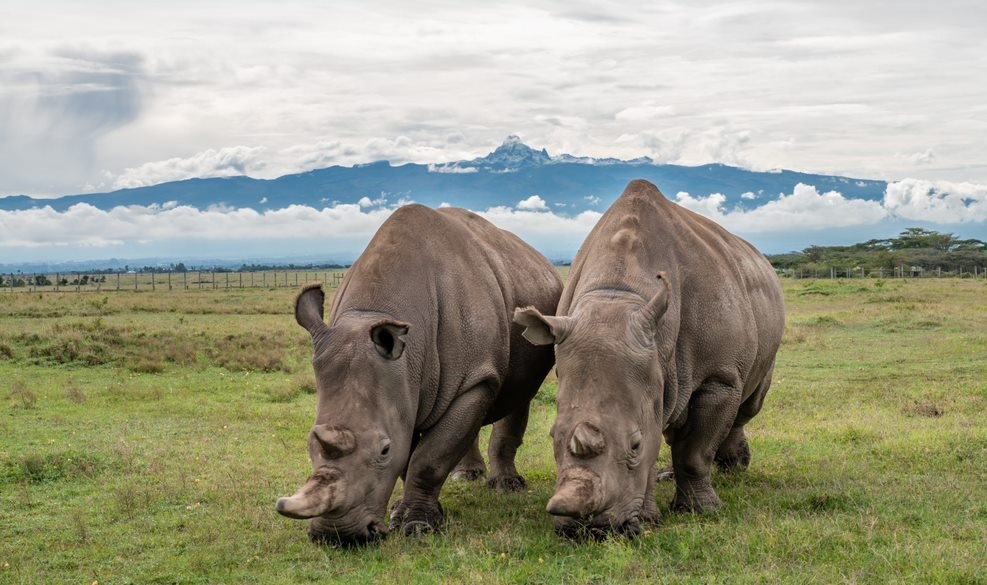Top Safari Tours in East Africa — discover gorilla trekking, Big Five safaris & the Great Migration across Uganda, Kenya, Tanzania & Rwanda.
Adventure Meets Conservation
Introduction: Experience Africa’s Wild Wonders with Purpose
East Africa is home to some of the planet’s most breathtaking wildlife and ecosystems, and its conservation efforts have gained global recognition. According to the African Wildlife Foundation (AWF), the region encompasses more than 30% of Africa’s key biodiversity areas, making it a hub for sustainable tourism.
Did you know? Africa’s conservation efforts are key in protecting endangered species and promoting sustainable tourism. Learn more about African conservation efforts.
- Gorilla Trekking in Uganda’s Bwindi Impenetrable Forest
Factual Information: Uganda is home to approximately 459 mountain gorillas, as reported in the International Gorilla Conservation Programme (IGCP) 2018 Census. The Bwindi Impenetrable National Park, a UNESCO World Heritage Site, is a critical habitat for these magnificent creatures.
Permits & Conservation: Gorilla trekking permits are issued by the Uganda Wildlife Authority, and funds from tourism directly contribute to conservation efforts and local community development.
What to Expect: Trekking through Bwindi’s dense forest to see mountain gorillas in their natural habitat is a once-in-a-lifetime experience.
One of our most memorable experiences happened when we accompanied a family of four on a gorilla trekking expedition in Bwindi Impenetrable Forest. As we made our way through the dense forest, the chirping birds and rustling leaves filled the air. After hours of trekking, the group was exhausted, and the moment we spotted the silverback mountain gorilla, all fatigue vanished.
This transformative encounter makes gorilla trekking in Uganda very unique while ensuring your visit directly contributes to the conservation of this endangered species.
Learn more about Uganda’s gorilla trekking.
Top Safari Tours in East Africa

- Witness the Great Migration in Kenya’s Maasai Mara and Tanzania’s Serengeti
Factual Reference: The Great Migration, often called the “eighth wonder of the world,” involves over 1.5 million wildebeest and 200,000 zebras annually, crossing between Kenya’s Maasai Mara and Tanzania’s Serengeti. This migration is a key event in East Africa’s natural calendar.
Sustainable Tourism Impact: According to the World Travel & Tourism Council (WTTC), tourism revenues from the Maasai Mara fund anti-poaching patrols and infrastructure development.
Best Time to Visit: The best months to witness the Great Migration are from July to October when the herds make their dramatic river crossings.
During my first trip to the Maasai Mara, I was fortunate enough to witness the Great Migration at the Mara River. Our group had been following the wildebeest for days, but the tension built up when we reached the river. As we quietly observed, the wildebeest gathered on the riverbanks, ready to cross. Then, the unforgettable happened: a crocodile burst from the water, clamping onto the leg of one unlucky wildebeest. The herd paused in shock but then surged forward, crossing the river in a spectacular display of survival instincts.
For many, like the couple next to me, it was a life-changing experience. They couldn’t stop talking about it, overwhelmed by the beauty and brutal reality of nature.
Explore more on the Great Migration.

- Conservation-Centric Safari in Rwanda’s Akagera National Park
Factual Insight: Akagera National Park in Rwanda has been managed through African Parks since 2010. The park saw the successful reintroduction of lions and black rhinos after extinction. Poaching rates have dropped by 98%, demonstrating the effectiveness of their community-based conservation model.
A Unique Experience: Apart from wildlife viewing, Akagera offers rich cultural experiences and stunning landscapes.
Conservation Efforts: Your visit helps fund wildlife protection and community development initiatives.
When we visited Akagera National Park in Rwanda, we went on a tour led by a local park ranger who had been with African Parks since they began their rhino reintroduction program. He shared his personal journey with us, from the heartbreaking loss of wildlife due to poaching to the thrilling success of seeing rhinos return to their natural habitat. “When I first started, there was no sign of a rhino for miles,” he said. “Now, I can hear the distant grunts of rhinos in the morning. It’s a sound that gives me hope.”
The ranger’s connection to the park and the animals he works to protect was palpable. We could sense his passion for community-based conservation and how tourism revenue supports anti-poaching measures, research, and local livelihoods. As we watched the rhinos grazing peacefully in the distance, it was clear that Akagera is a living testament to what collaborative conservation can achieve.
Explore African Parks’ work in Akagera. - Climb Mount Kilimanjaro in Tanzania
Factual Highlight: Mount Kilimanjaro, a UNESCO World Heritage Site, attracts around 50,000 climbers annually. Treks generate substantial revenue, with 30% of the proceeds supporting local communities and conservation efforts.
Why Kilimanjaro? It is Africa’s highest peak and one of the most iconic mountains to climb.
Climbing Tips: Be prepared for altitude and the challenges of the seven-day trek, which offers unique ecosystems at each elevation.
One of the most inspiring stories I’ve heard was from a fellow climber on Mount Kilimanjaro who was an engineer from the UK, despite being over 50 and out of shape, had dreamed of climbing Africa’s highest peak for years. As we trekked through the rainforests and alpine meadows, he shared how climbing the mountain was a personal challenge—not just for the physical achievement but also as a tribute to his late wife, who had passed away a year earlier.
Upon reaching the summit, tears filled his eyes as he raised his arms in celebration. It was a powerful reminder of how travel, especially adventure travel like climbing Kilimanjaro, can be both a personal journey and a way to support the local community. His climb had also contributed to sustainable tourism, with a portion of his fees going toward preserving the mountain’s fragile ecosystem.
Learn more about Kilimanjaro treks.

- Explore the Hidden Gems of Burundi and DR Congo
Burundi’s Heritage: Burundi is home to the world-famous Gishora Drummers, a UNESCO-protected cultural tradition that showcases the country’s rich cultural tapestry.
DR Congo’s Wonders: Mount Nyiragongo, one of the most active volcanoes in the world, offers a unique, challenging trek with breathtaking views of its lava lake.
Safety First: Treks are closely monitored by the Volcanic Observatory of Goma, ensuring climber safety and environmental sustainability.
While exploring Burundi, we visited the famous Gishora Drummers, a UNESCO-protected tradition that has been passed down for generations. Our guide, a local drumming expert, shared a powerful story about how the drums played a pivotal role during Burundi’s struggle for independence. “The drums were our voice when we had no other means of communication,” he explained. “They connected the people, giving us strength in the most difficult times.” Eat the famous Isombe in Burundi as one of the traditional and local foods- a mixture of Cassava leaves stew.
Later, we journeyed to DR Congo’s Mount Nyiragongo, one of the most active volcanoes in the world. Our group included an experienced volcano expert who explained the dangers and the importance of monitoring volcanic activity. We approached the summit and stood in awe of the glowing lava lake. “This is a unique experience that allows visitors to see firsthand the natural forces that shape our planet,” the geologist said. The trek was a blend of adventure and education, showing us how tourism can safely highlight the power of nature while raising awareness about volcanic monitoring and conservation efforts.
Explore DR Congo’s volcanic adventures.

Conservation Success Stories in East Africa
Mountain Gorilla Recovery in Uganda and Rwanda
Over the past three decades, the mountain gorilla population has doubled, thanks to collaborative efforts by organizations like the World Wide Fund for Nature (WWF).
Conservation Statistics: The growth of the mountain gorilla population is a success story in global wildlife conservation.
Explore the WWF Gorilla Conservation efforts.
Kenya’s Rhino Protection Initiatives
The Ol Pejeta Conservancy in Kenya is home to 130 black rhinos and the last two northern white rhinos on Earth (Najin and Fatu). Through contributions from visitors, Ol Pejeta funds cutting-edge rhino IVF research and other conservation initiatives.

Conservation at Ol Pejeta:
During a visit to Ol Pejeta Conservancy in Kenya, I met a ranger who told us about the heartbreaking loss of the last male northern white rhino, Sudan, in 2018. “Sudan’s death was a symbol of everything we’re trying to prevent,” he said.
Later, as we toured the conservancy, we saw firsthand how conservation efforts funded by tourists are helping to preserve biodiversity. The ranger took pride in showing us the healthy, flourishing population of black rhinos and explained how the conservancy is at the forefront of innovative wildlife protection.
Learn more about Ol Pejeta.
Practical Tips for a Memorable Safari
Choose Sustainable Operators: Companies that have been accredited by the Global Sustainable Tourism Council (GSTC), ensuring eco-friendly practices throughout the safari experience.
Plan around Peak Wildlife Seasons: Studies from the East African Tourism Platform (EATP) indicate that satisfaction peaks during migration and calving seasons.
Travel Insurance: When planning adventure activities, ensure you have travel insurance policies from companies like World Nomads.
More on sustainable tourism.
How Agasaro Safaris Makes a Difference?
Agasaro Safaris is not just a travel company—it’s a partner in conservation and community empowerment. By collaborating with local authorities like the Uganda Wildlife Authority and African Parks, every tour you take helps protect wildlife and uplift local communities.
Learn more about Agasaro Safaris.
FAQ’s
When is the best time to go gorilla trekking in Uganda?
The best time to trek gorillas in Uganda is during the dry seasons, from June to September and December to February. It ensures better trekking conditions in Bwindi Impenetrable Forest.
What is the Great Migration, and why is it so special?
The Great Migration is an annual event where over 1.5 million wildebeest and 200,000 zebras migrate between Kenya’s Maasai Mara and Tanzania’s Serengeti.
What are the benefits of eco-friendly safaris?
Eco-friendly safaris, such as those offered by Agasaro Safaris, help reduce environmental impact, promote wildlife conservation, and contribute to local community development.
